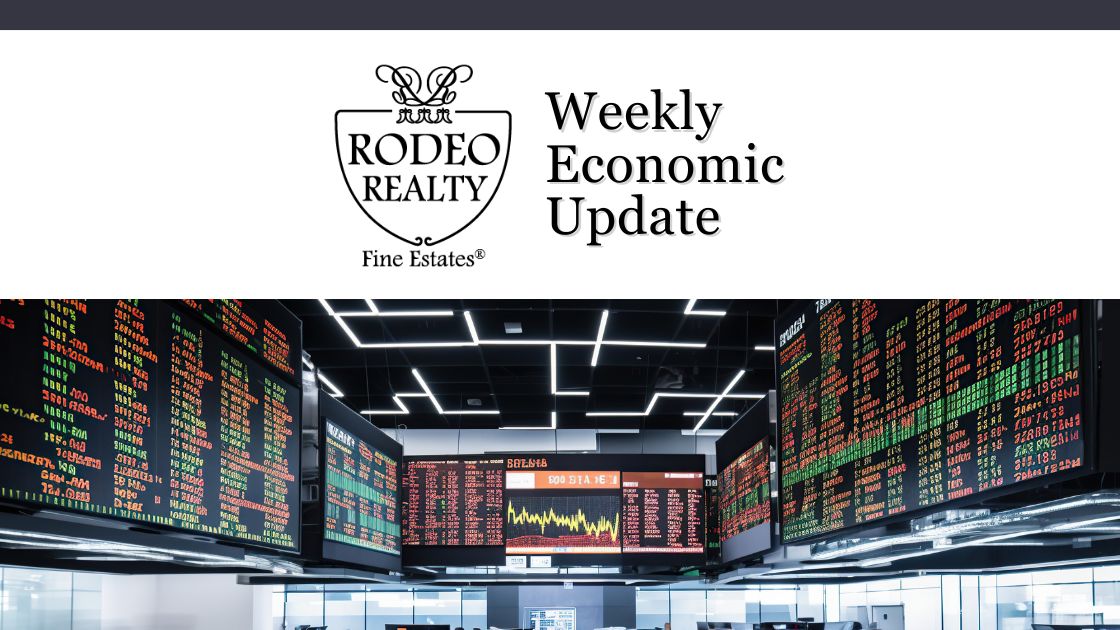|
Stock markets – The Dow Jones Industrial Average closed the week at 44,544.66, up 0.3% from 44,424.25 last week. It is up 4.7% year-to-date. The S&P 500 closed the week at 6,040.53, down 1% from 6,101.24 last week. The S&P is up 2.7% year-to-date. The Nasdaq closed the week at 19,627.44 down 1.6% from 19,954.39 last week. It is up 1.6% year-to-date.
U.S. Treasury bond yields – The 10-year treasury bond closed the week yielding 4.58% down from 4.63% last week. The 30-year treasury bond yield ended the week at 4.83%, down slightly from 4.85% last week. We watch bond yields because mortgage rates follow bond yields. Mortgage rates – Every Thursday Freddie Mac publishes interest rates based on a survey of mortgage lenders throughout the week. The Freddie Mac Primary Mortgage Survey reported that mortgage rates for the most popular loan products as of January 30, 2025, were as follows: The 30-year fixed mortgage rate was 6.95%, down from 6.96% last week. The 15-year fixed was 6.12%, down from 6.16% last week. The graph below shows the trajectory of mortgage rates over the past year.
Economic update for the month ending January 31, 2025 Data released in January showed that inflation continued to rise in December – The Consumer Price Index (CPI) showed that consumer prices increased 2.9% year-over-year December, its third straight month of year-over-year increases, and its highest level in five months. The CPI peaked at 9.1% in June 2022 and worked its way down to a 2.4% year-over-year increase in September but has increased every month since September. Core CPI, which excludes volatile food and energy costs,rose 3.2% year-over-year in December, down from 3.3% in November. The Produce Price Index (PPI) showed that wholesale prices increased 3.3% year-over-year in December, up from a 3% year-over-year increase in November. Core PPI increased 3.5% year-over-year in December, up from 3.3% in November. The Personal-Consumption Expenditures Index (PCE), the Fed’s favorite gauge of inflation rose 2.6% year-over-year in December, up from a 2.4% year-over-year increase in November. U.S. Hiring Surged in December. The Department of Labor and Statistics reported that 256,000 new jobs were added in December. It blew away economists who were surveyed by Dow Jones who forecasted 155,000 new jobs. The unemployment rate remained at 4.1%. Average hourly wages increased 3.9% year-over-year in December, over one percent above the current rate of inflation. More people working and higher wages fuels consumer spending which causes prices to rise. As inflation moves higher ot pushes up long-term interest rates like mortgage rates. Below is a chart of the CPI rate from 2021
Stock markets – The Dow Jones Industrial Average ended the month at 44,544.66, up 4.7% from 42,544.72 on December 31, 2024. The S&P 500 closed the month at 6,040.53, up 2.7% from 5,881.63 on December 31, 2024. The NASDAQ closed at 19,627.44, up 1.6% from 19,310.79 on December 31, 2024 U.S. Treasury Bond Yields increased in 2024 – The 10-year U.S. treasury bond yield closed the year at 4.58%, unchanged from 4.58% On December 31, 2024. The 30-year treasury yield ended the year at 4.83%, up from 4.78% on Dec. 31, 2024. We watch bond yields because mortgage rates often follow treasury bond yields. Mortgage rates – Every Thursday Freddie Mac publishes interest rates based on a survey of mortgage lenders throughout the week. The Freddie Mac Primary Mortgage Survey reported that mortgage rates for the most popular loan products as of January 30, 2025, were as follows: The 30-year fixed mortgage rate was 6.95%, up from 6.85% last month. The 15-year fixed was 6.12%, up from 6.% last month. Home sales data is released on the third week of the month for the previous month by the California Association of Realtors and the National Association of Realtors. These are December’s home sales figures. U.S. existing-home sales December 2024 – T he National Association of Realtorsreported that existing-home sales totaled 4.24-million units on a seasonal annualized rate in December, up 9.3% from an annualized rate of 3.88-million units last December. The median price for a home sold in the U.S. in November was $404,400, up 6% from $387,800 one year ago. There was a 3.3-month supply of homes for sale in December, up from a 3.1-month supply in December 2023. F irst-time buyers accounted for 31% of all sales. Investors and second-home purchases accounted for 13% of all sales. All cash purchases accounted for 28% of all sales. Foreclosures and short sales accounted for 2% of all sales. California existing-home sales – The California Association of Realtors reported that existing-home sales totaled 268,180 on an annualized basis in December, up 19.8%from a revised 223,900 homes sold on an annualized basis last December. The statewide median price paid for a home in was $861,020 in December, up 5% from $819,820 one year ago. There was a 2.7-month supply of homes for sale in December, up slightly from a 2.6-month supply in December 2023. The graph below lists home sales data by county in Southern California.
|
If you’d like to unsubscribe and stop receiving these emails click here .



